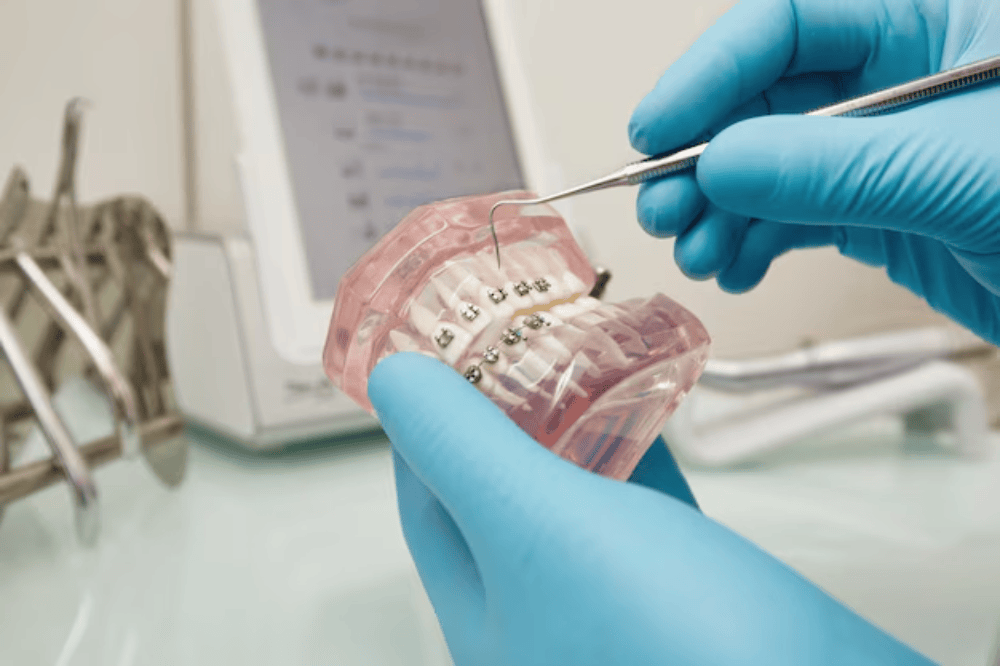 Ever noticed those stubborn deposits on your teeth that feel rough? They’re called calculus bridges, and they’re more than just an uneven inconvenience. Let’s dive into what they are, why they form, how they can affect your teeth, ways to remove them, and most importantly, how to keep them from coming back. Understanding these dental deposits is crucial for maintaining a healthy, bright smile. Now, let’s explore effective ways to tackle calculus bridges and maintain strong, clean teeth with confidence, all while ensuring effective halitosis treatment in Vancouver.
Ever noticed those stubborn deposits on your teeth that feel rough? They’re called calculus bridges, and they’re more than just an uneven inconvenience. Let’s dive into what they are, why they form, how they can affect your teeth, ways to remove them, and most importantly, how to keep them from coming back. Understanding these dental deposits is crucial for maintaining a healthy, bright smile. Now, let’s explore effective ways to tackle calculus bridges and maintain strong, clean teeth with confidence, all while ensuring effective halitosis treatment in Vancouver.
What is a Calculus Bridge and How Does it Form?
What is dental calculus (tartar)?
Calculus bridge meaning refers to tough deposits of mineralized plaque, known as tartar, that stick to teeth and can only be removed through professional dental cleaning.
How does plaque harden into calculus?
If plaque sticks around for too long—usually a couple of days—it starts to mineralize and turn into tartar. This hardened gunk doesn’t budge with regular brushing and needs a dentist’s tools to remove.
What does a calculus bridge look like?
Imagine tiny, gritty deposits along your gum line or between your teeth, often yellowish or brown. When these patches connect between teeth, they form what’s known as a calculus bridge.
What Causes Calculus Bridges to Develop?
Calculus bridge disease refers to oral health problems caused by these hardened plaque deposits on teeth, which can affect your gums and lead to serious dental issues.
-
Poor oral hygiene practices
Skipping brushing sessions or forgetting to floss gives plaque a chance to harden into tartar, especially along the gum line.
-
Dietary factors
Eating lots of sugary or starchy foods feeds the bacteria in plaque, making them more likely to stick around and harden.
-
Smoking and tobacco use
These habits not only stain your teeth but also contribute to the buildup of plaque and tartar.
-
Individual variations in saliva composition
Some people naturally produce more plaque or have saliva that doesn’t neutralize acids well, which can speed up tartar formation.
What are the Health Risks Associated with Calculus Bridges?
-
Gum disease (gingivitis, periodontitis)
Tartar irritates your gums, leading to inflammation (gingivitis) and, if it gets worse, can cause serious gum disease (periodontitis).
-
Bad breath (halitosis)
Food trapped in tartar can give you persistent bad breath that just won’t go away with brushing alone.
-
Tooth decay and cavities
The rough surface of tartar provides a perfect hideout for bacteria, which can lead to cavities and decay if not cleaned away.
-
Aesthetic concerns
Tartar can stain your teeth, making them look dull or discoloured, which can affect your smile’s appearance.
How Can I Remove a Calculus Bridge?
Calculus bridge removal involves the use of specialized dental tools and techniques to effectively eliminate hardened plaque, or tartar, from teeth surfaces.
- Scaling: This involves scraping off tartar from your teeth with special tools.
- Polishing: After scaling, your dentist smooths out your teeth to remove leftover plaque and stains.
- Deep cleaning (scaling and root planning): For more serious cases, this involves cleaning below your gum line to get rid of tartar buildup on your tooth roots.
Effective Strategies for Preventing Calculus Bridges:
Maintaining rigorous oral hygiene:
- Brushing technique and frequency: Brush your teeth at least twice a day using a soft-bristled brush and fluoride toothpaste.
- Flossing: Clean between your teeth and along your gum line daily to remove plaque buildup.
- Mouthwash: Rinse with an antimicrobial mouthwash to reduce bacteria that cause plaque.
- Regular dental checkups and cleanings: Visit your dentist every six months for a professional cleaning and checkup.
- Dietary adjustments: Cut back on sugary and starchy foods that encourage plaque formation.
- Quitting smoking and tobacco use: Kick these habits to the curb—they not only stain your teeth but also promote plaque and tartar buildup.
Contact Inspire Dental Group Today
Understanding calculus bridges is the first step to keeping your teeth healthy and your smile bright. By taking care of your oral hygiene, seeing your dentist regularly, and making smart lifestyle choices, you can prevent these stubborn deposits from causing trouble.
Don’t let calculus bridges get in the way of your oral health—take charge and enjoy a cleaner, healthier smile. For the best care and effective solutions, visit Inspire Dental Group, your trusted dentist in Vancouver. We’re here to help you achieve a bright, confident smile.

